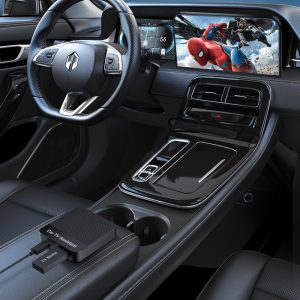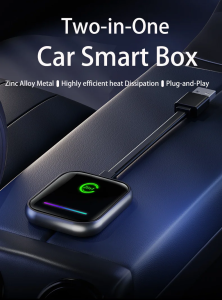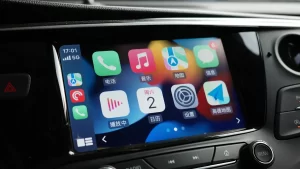
AI video processors have revolutionized the way you experience driving in 2025. These advanced systems enhance safety by detecting hazards in real time, enabling your car to react instantly. They also elevate entertainment with personalized in-car experiences tailored to your preferences. Navigation has become more precise, with improved lane departure alerts and traffic sign recognition.
The table below highlights these benefits:
Benefit | Description |
|---|---|
Safety | Real-time hazard detection through advanced data processing, leading to instantaneous reactions. |
Entertainment | Personalized in-car experiences enabled by efficient data management. |
Navigation | Enhanced accuracy in ADAS features, improving lane departure and traffic sign recognition. |
With these innovations, a video box powered by AI is no longer a luxury but an essential tool for modern vehicles.
Key Takeaways
AI video tools make driving safer by spotting dangers quickly.
They help with navigation using lane tracking and sign reading.
Pick a tool that matches your budget and what you need.
Find one that’s easy to use and simple to install.
Make sure it works well with your car for best results.
Overview of AI Video Processors for Cars
What Are AI Video Processors?
AI video processors are specialized systems designed to analyze and interpret visual data in real time. These processors use advanced algorithms to process inputs from cameras and sensors, enabling your car to make intelligent decisions. They form the backbone of modern automotive technologies, such as advanced driver-assistance systems (ADAS) and autonomous driving. By leveraging AI, these processors can detect objects, recognize traffic signs, and even predict potential hazards on the road.
Why Are They Essential for Cars in 2025?
AI video processors have become indispensable in 2025 due to their ability to enhance safety, navigation, and overall driving experience. Here’s why they are crucial:
They improve driver safety by enabling real-time video analytics.
They support ADAS features like lane tracking and collision avoidance.
GMSL2 cameras provide high bandwidth and low latency, ensuring quick visual data processing.
Multi-camera setups offer comprehensive coverage, improving image quality for AI algorithms.
These capabilities allow your vehicle to respond faster and more accurately to its surroundings, making every journey safer and more efficient.
Key Trends in AI Video Processing Technology
Integration of AI Video Generators
AI video generators are transforming how vehicles process and display visual data. These systems create dynamic, high-quality visuals that enhance both safety and entertainment. For instance, they can generate augmented reality overlays on your windshield, highlighting navigation routes or potential hazards. This integration ensures that you receive real-time, actionable insights without distractions.
Advancements in Professional-Quality AI Videos
The demand for professional-quality AI videos has driven significant advancements in automotive technology. Modern AI video processors now support ultra-high-definition (UHD) video streams, ensuring crystal-clear visuals. This improvement benefits not only safety systems but also in-car entertainment. Whether you’re streaming content or relying on AI-generated navigation visuals, the quality remains impeccable. These advancements make your driving experience more immersive and enjoyable.
Key Evaluation Criteria for AI Video Processors
Performance Metrics
Processing Speed and Efficiency
When evaluating an AI video processor, processing speed and efficiency are critical. These processors must handle vast amounts of visual data in real time. Faster processing ensures that your vehicle can react instantly to changing road conditions. Efficiency also plays a role in reducing power consumption, which is vital for electric and hybrid vehicles. A high-performing processor guarantees smooth operation without lag, even when managing multiple camera feeds simultaneously.
AI Capabilities (e.g., Object Detection, Lane Tracking)
AI capabilities define how well a processor can interpret and act on visual data. Features like object detection and lane tracking are essential for modern vehicles. Object detection identifies pedestrians, vehicles, and obstacles, while lane tracking ensures your car stays centered on the road. Advanced AI processors also predict potential hazards, giving you an added layer of safety. These capabilities make driving more intuitive and secure.
Compatibility with Vehicle Systems
Integration with Infotainment Systems
AI video processors must seamlessly integrate with your car’s infotainment system. This integration enhances your driving experience by providing real-time visuals and data. The table below highlights key features that enable this compatibility:
Feature | Description |
|---|---|
High Bandwidth | Supports ultra-high-definition video streams required for complex AI algorithms. |
Long-Distance Transmission | Allows flexible placement of cameras throughout a vehicle with data transmission over 15 meters. |
Low Latency | Ensures real-time video analytics essential for critical in-vehicle applications. |
Power Over Coax (PoC) | Simplifies installation by transmitting power and data over a single cable, reducing complexity. |
Enhanced Image Quality | Delivers high-resolution video streams with minimal noise, crucial for accurate AI detection. |
Real-Time Processing | Low-latency transmission enables split-second decisions in safety-critical applications. |
Scalability for Multi-Camera | Supports multiple cameras for comprehensive vehicle coverage, simplifying system design. |
Future-Ready | High bandwidth ensures support for next-generation video analytics requirements. |
Support for Dashcams and Parking Surveillance
AI video processors also support dashcams and parking surveillance systems. These features provide added security by recording incidents and monitoring your surroundings. Advanced processors enable high-resolution video recording and real-time alerts, ensuring you stay informed about potential threats.
Cost and Value for Money
Pricing Tiers
AI video processors come in various pricing tiers, catering to different budgets. Entry-level options provide basic features like object detection and lane tracking. Mid-range processors offer enhanced capabilities, including multi-camera support and UHD video streaming. Premium models deliver cutting-edge AI features, such as predictive analytics and augmented reality overlays.
Features vs. Cost Analysis
When choosing an AI video processor, consider the features you need versus the cost. A high-end processor may offer advanced capabilities, but it might not be necessary for all users. Evaluate your requirements, such as safety, entertainment, or navigation, to determine the best value for your investment.
Ease of Use and Installation
User-Friendly Interfaces
A user-friendly interface plays a crucial role in ensuring you can operate an AI video processor with ease. Modern systems prioritize intuitive designs, allowing you to navigate menus and access features without confusion. Many processors now include touchscreens or voice-activated controls, reducing the need for manual adjustments. These interfaces often feature customizable settings, enabling you to tailor the system to your preferences.
For example, some AI video processors provide real-time visual overlays on your dashboard, offering clear and actionable insights. This design minimizes distractions and ensures you stay focused on the road. Additionally, manufacturers often include mobile app integration, letting you control the system remotely. These advancements make the technology accessible even for users with minimal technical expertise.
Installation Requirements
Installing an AI video processor requires careful consideration of your vehicle’s specifications. Most systems are designed for compatibility with a wide range of car models, but you should verify this before purchase. The installation process typically involves connecting the processor to your car’s cameras, sensors, and infotainment system.
Some processors simplify installation by using technologies like Power over Coax (PoC), which reduces the number of cables needed. Others come with detailed guides or professional support services to assist you. While basic setups can be completed in a few hours, more advanced features may require professional installation. Ensuring proper setup is essential for optimal performance and safety.
Tip: Always consult the user manual or seek professional help if you're unsure about the installation process. Proper installation ensures the system functions as intended and avoids potential issues.




